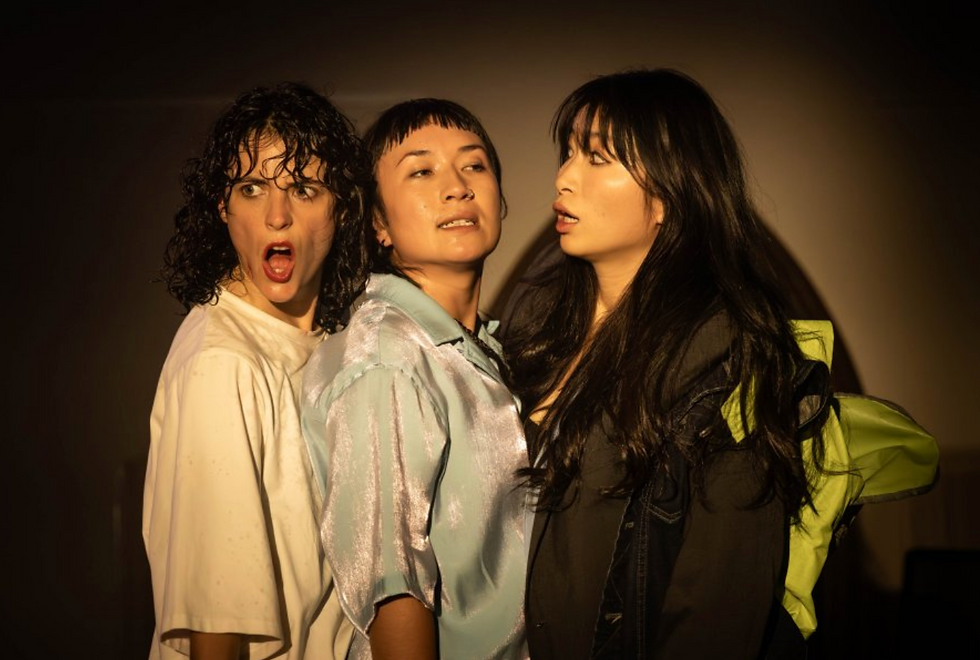Review: Driftwood at Chapel off Chapel
- Theatre Travels

- May 7, 2023
- 4 min read
Review by Susanne Dahn
Every family, particularly every one of the world’s millions of displaced families that have been forced to leave their homes, has a story to tell and Tania de Jong AM has harnessed plentiful resources to bring her own family story to the stage again (as a follow up to Driftwood - The Musical’s 2022 premiere season and as a curtain raiser to a proposed New York City run).
The generosity of many has afforded Tania’s artistic venture a formidable first line of deeply experienced and highly talented musical and theatre professionals to tell her family’s story in Tania’s preferred style - the musical.
Driftwood - The Musical is the second shrine to Tania’s grandparents (the first is the Duldig Studio Museum and Sculpture Garden in Melbourne which opened in 1986). This new musical shrine, now dedicated to two generations, has clearly been conceived and produced with love, most certainly with love for the artefacts of those two generations’ artistic and sporting lives, but as the first musical number Something Missing clues us into, and it’s reprises then emphasise, there remains something missing in this production - more than the sadness I can’t name or the questions I don’t dare to ask.
The musical tells the story of Tania’s tennis playing mother Eva de Jong-Duldig and Eva’s parents, the artist and designer Slawa Horowitz and the sculptor and tennis player Karl Duldig, focusing on their escape from Nazi-threatened Vienna to their eventual re-settlement in Australia by way of Singapore and then interment in Tatura. Slawa left behind in Europe her actress sister Rella who was protected by her marriage to a French national.
In Eva’s memoir on which Jane Brodie’s technically accomplished stage play has been based, a centrepiece of the story is Slawa’s invention of the foldable umbrella in Vienna in 1928 while she was a non-resident sculpture student at the Akademieder Bildenden Kunste.
In fact a foldable umbrella had already been developed and patented in 1923 in Hungary by the Balogh brothers. In 1928 Hans Haupt also applied his foldable umbrella invention for a patent and the “Knirps” eventually became a synonym in the German language for small foldable umbrellas.
So foldable umbrellas were not new, but Slawa’s prototype was for an improved compact foldable umbrella, which she named the “Flirt”, and the family had the connections and resourcefulness to have the design also patented in 1929. The design was produced by Austrian manufacturers Brüder Wüster for 9 years, until, in 1939 as Eva and Karl again used their resourcefulness and connections to leave Vienna, Eva sold her patent to this firm. The 1000 Reichmarks from the transaction helped ensure the safe transport and storage of the family’s art and furniture from the apartment in Vienna to the basement of Rella’s new home in Paris for the duration of the second world war until it could finally be shipped to Australia.
There are many fine aspects of this piece of musical theatre. The set design of Jacob Battista is subtle and brilliant with its umbrella design in the parquetry floor, many moving parts in the joinery and reflections of privilege in the dominant art and artefact collections. The large rendered tear which serves as a screen is inspired and lighting, sound, audio-visual and stage effects are all used well. Kim Bishop also evidences a keen eye in his costume choices.
Anthony Barnhill’s often very beautiful musical score with its blend of chamber opera, Jewish spiritual music and references to classical and popular music of the time serves to hold tight and propel the piece forwards. Anthony leads two very accomplished musicians in Roy Theaker on violin and Karina Krusteva on cello. The weak points are the moments of flimsiness in the libretto - as flimsy in some parts, one might say, as some foldable umbrellas.
Gary Abrahams as Director has done a fine job of showcasing the numerous talents that the ample resources have assembled while muting and blocking any obvious weaknesses. Bridget Costello brings gorgeous voice and movement to Eva, Anton Berezin occupies the role of Karl with skill and strength, Michaela Burger as Rella is talented and charming, Nelson Gardner shows huge range in the support roles and Tania de Jong is obviously heartfelt in the role of her grandmother.
Eva and Tania’s creation in Driftwood - The Musical is providing important and life changing opportunities for talented Australians in musical theatre to build their skills and their careers. This is a very good thing. And the central message of this musical - that art and creativity can counteract and prevail over destruction - is indeed true. Sadly though art is still too often the province of privilege and far too few meritorious artists have the opportunity to pursue their talents and interests. How wonderful would it be if the well connected and resourceful could dispense their good fortune to beneficiaries wholly relative to the virtue of the work.
The clue to Driftwood - The Musical’s missing piece may be that darkness and light are actually not at all alike, that inanimate art and furnishings cannot substitute for the flesh and blood of real family and that many other deeply worthy stories of life sadly remain unwritten, untold and unknown.
Driftwood - The Musical is playing at Chapel off Chapel in Melbourne until 20 May before heading to Sydney’s Glen St Theatre, Riverside Theatre in Parramatta and the Eternity Playhouse through until 18 June.

Image Supplied




